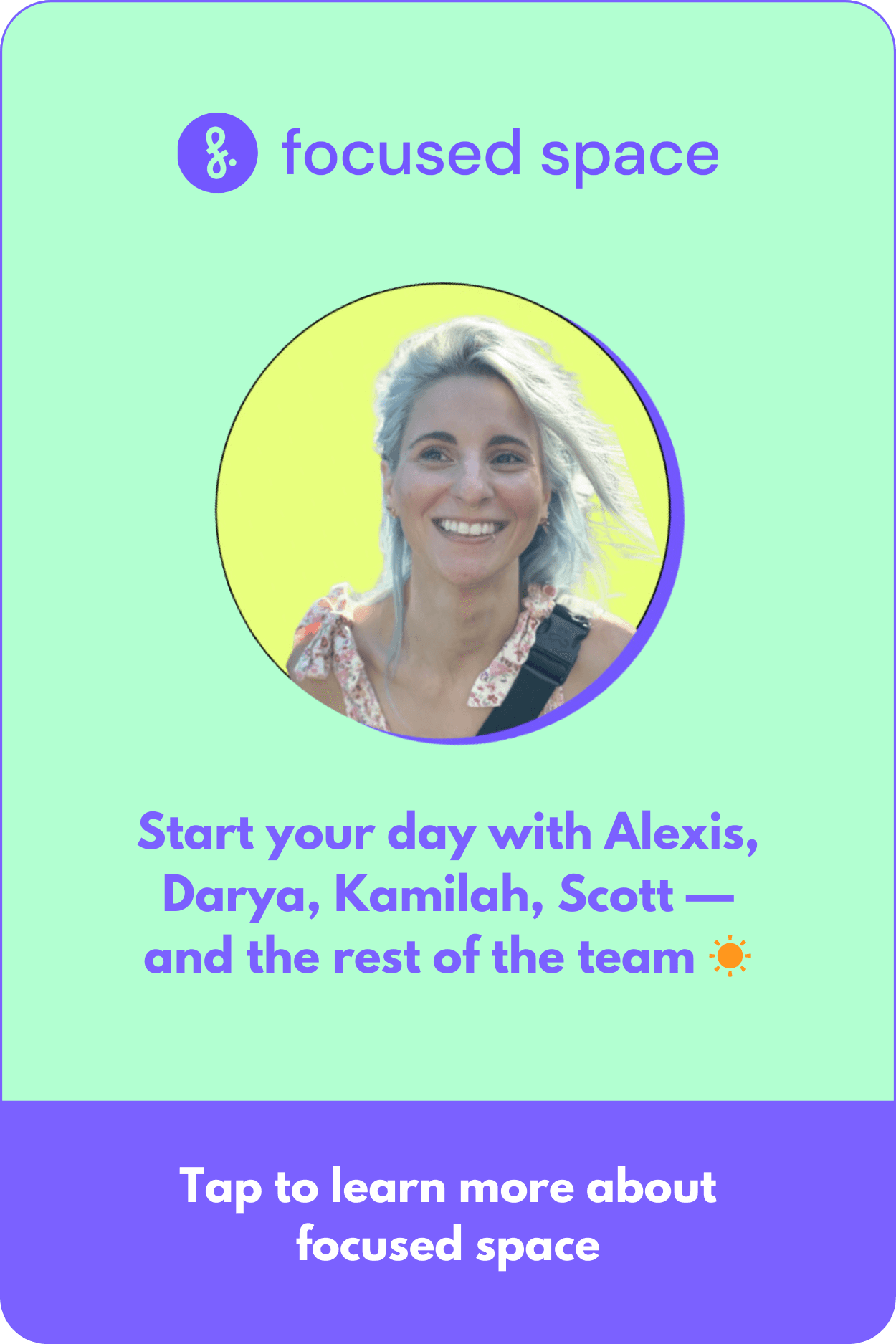Book Review: Get Stuff Done Without the Stress
Feb 9, 2025
This week we have a special guest coming to visit us here at focused space.
On Wednesday February 12th, we’ll be welcoming back Risa Williams, author of The Procrastination Playbook, to share insights from her new book: Get Stuff Done Without the Stress.
It comes out this week, and we’re very lucky to have her join us as part of her book tour!
In addition to being an author, Risa Williams is a psychotherapist and time management coach. Her latest book is based on her own experiences getting lost in overwhelm, frustration, and stress while working towards her goals — and how she learned how to break herself out of the burnout cycle.
We're so excited to share this book with our community! If you'd like to sign up for the free workshop, you can grab a ticket here.
And if you can't join us… here are a few of our team's big takeaways from the book:
We Are Humans, Not Robots
One of the discussions in the book that really resonated with us is the difference between healthy productivity, and toxic productivity.
Risa's book explains how to tell when you might be slipping into a mindset that makes you feel more like a robot than a human being… which we are all susceptible to.
Here are two takeaways from the book that helped remind us to connect with our own humanity as we work towards our goals:
Figuring out what you want to feel in the future helps you figure out what you want to do today
Downtime is not “lazy,” it’s a necessity; it helps our brains and bodies function
One thing we really believe here at focused space: it is possible to push ourselves — and also take care of ourselves along the way.
3 Truths About Time Management
In her book, Risa shares a few common misconceptions people have about time.
Do any of these sound familiar to you?
First, many of us tend to expect ourselves to have unlimited energy and focus each day.
We also sometimes expect ourselves to complete as many tasks as possible by plugging them into every spare slot in our calendars… and lastly, some of us also tend to avoid downtime, because it might “derail” us from generating output.
If this sounds like you, you are certainly not alone.
But here are 3 reality-based truths from the book about our own ability to manage our time:
We have very limited amounts of focus and energy each day.
While we can accomplish lots of tasks, each one costs us energy, and some tasks cost us far more energy than others.
Our brains need a mix of focus, fun, and rest each week to stay balanced.
Task Intensity Meter
One of the tools from the book that we’ve found super helpful in planning our day is called the Task Intensity Meter. You can visualize it like this…

When Risa says “intensity,” what she means is how stressful and intense does this particular task feel for you to do?
You would ask yourself: does the task I am doing feel high, middle, or low intensity to me right now?
Let’s do an everyday example together so you can see how this works: Doing the laundry.
How would you rate laundry right now for you as a task — would it be low, middle, or high-level intensity?
If you feel like laundry is a high-intensity task, you are not alone! Everyday tasks can stress people out far more than you might think, and we all have different tasks that stress us out.
Just by becoming more aware of which tasks tend to feel high intensity to you, you can start to find ways to make things easier on yourself each week — such as trying not to schedule more than 2 high-intensity tasks for the same day!
The Hats Method
This book has too many gems to fit into one post — but we have time to share one final tool we loved: “The Hats Method.”
This method helps us focus our attention on what needs to be done and avoid decision fatigue.
Here’s how it works:
Imagine you have a free hour in front of you. But before you do anything, you have to select an imaginary “hat” to wear first.

This represents the mental gear you must shift into as you open up this “time box” and work on the tasks inside.
The “Hats Method” is an easy visualization to help you learn how to narrow your focus down to what’s directly in front of you.
You can ask yourself: “Which ‘hat’ do I need to wear for the next upcoming segment of time?”
We know that sometimes you have to wear more than one hat at a time, but being intentional about which hats you are wearing at a given time can help you avoid multitasking, stay present in the moment, transition between things in a calmer way, and know what energy is required of yourself.
Try it out this week and let us know how it goes!
If you're new to building consistent habits and routines, we hope this week's theme gave you some new tools to try. And if you're already a pro, we hope these prompts will be useful to your ongoing practice!
P.S. If you could use help accomplishing your goals this season, please join us at one of our live guided work sessions, or morning planning sessions!
Take care,
— Alexis from focused space


